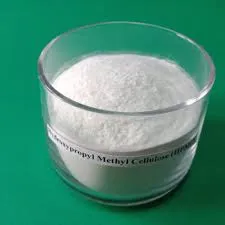
Okt . 31, 2024 17:22 Back to list
HPMC Applications in Tile Adhesive Formulations and Performance Enhancement Techniques
HPMC for Tile Adhesive The Key to Superior Bonding
Hydroxypropyl Methylcellulose (HPMC) is a widely used polymer that plays a crucial role in the formulation of tile adhesives. With its unique properties, HPMC enhances the performance, workability, and durability of tile adhesive products, making it an essential ingredient in the construction industry.
HPMC for Tile Adhesive The Key to Superior Bonding
Moreover, HPMC contributes to the water retention of the adhesive. This means that the adhesive retains moisture within its matrix even after it has been applied, which is essential for proper curing. Adequate moisture allows the cement components within the adhesive to hydrate effectively, resulting in a strong bond between the tile and the substrate. Without sufficient water retention, the adhesive may dry too quickly, leading to adhesion failure, cracking, and ultimately reducing the lifespan of the tiled surface.
hpmc for tile adhesive

In addition to improving workability and water retention, HPMC also provides essential thixotropic properties. This feature allows the adhesive to resist sagging when applied on vertical surfaces, such as walls. A thixotropic material becomes less viscous when agitated or stressed, temporarily allowing for easier application, and then reverts to a more solid state, providing excellent holding power. This is particularly important in preventing tiles from slipping or sliding down during installation, ensuring a level and uniform surface.
HPMC's chemical stability and compatibility with other ingredients make it an ideal choice for various types of tile adhesives, including thin-set mortars, thick-bed mortars, and premixed varieties. It can easily integrate with a variety of additives, such as latex compounds, which further enhance adhesion and flexibility.
Additionally, HPMC is non-toxic and environmentally friendly, making it a sustainable choice in modern construction practices. Its production is based on cellulose, a renewable resource, which aligns with the growing demand for eco-friendly building materials.
In conclusion, HPMC is an indispensable component in tile adhesives, offering multiple benefits that enhance adhesion performance, workability, and environmental sustainability. Its ability to improve water retention, increase viscosity, and provide thixotropic properties ensures that tile installations are durable and aesthetically pleasing. For contractors and builders, understanding the significance of HPMC in tile adhesives can lead to more successful projects and satisfied clients. As construction techniques evolve, the role of HPMC in tile adhesives will continue to be a cornerstone of effective and reliable building practices.
-
Versatile Hpmc Uses in Different Industries
NewsJun.19,2025
-
Redispersible Powder's Role in Enhancing Durability of Construction Products
NewsJun.19,2025
-
Hydroxyethyl Cellulose Applications Driving Green Industrial Processes
NewsJun.19,2025
-
Exploring Different Redispersible Polymer Powder
NewsJun.19,2025
-
Choosing the Right Mortar Bonding Agent
NewsJun.19,2025
-
Applications and Significance of China Hpmc in Modern Industries
NewsJun.19,2025







